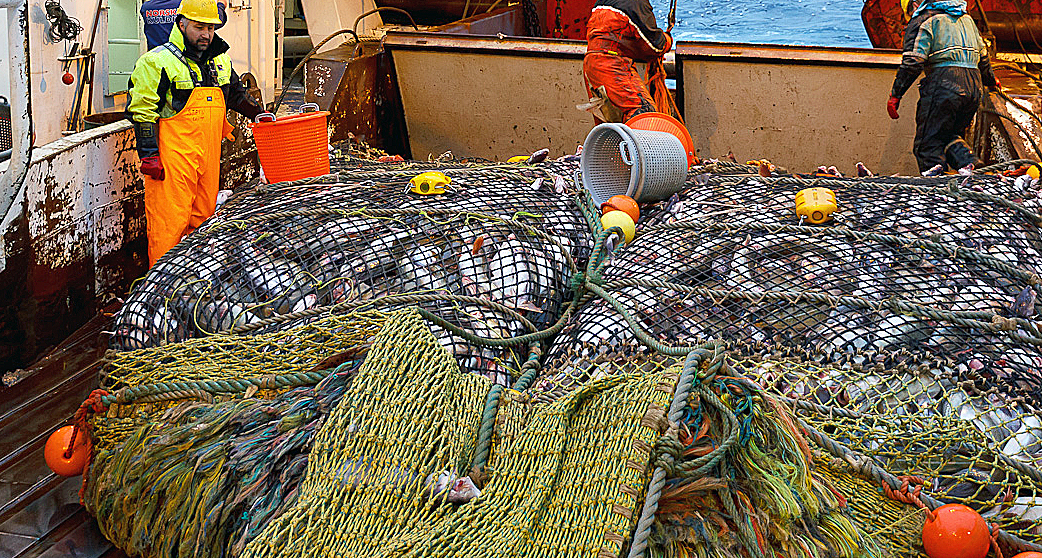It is trawling and purse seine fishing that are to become more eco-friendly. The goal is to mitigate ocean floor damage and make fishing more selective.
From bottom to semi-pelagic trawling
Bottom trawling harms the ocean floor. CRISP works on reducing such damages by developing less impactful trawl gears and doors that do not touch the ocean floor. As yet, semi-pelagic trawling just above the ocean floor provides for smaller catches than bottom trawling, but work is being done to increase its effectiveness. Such gear can be taken into use within two to three years.
Semi-pelagic trawling causes less damage both to the ocean floor and to the trawling gear, even as it reduces fuel consumption.
Better sonars
Purse seine fishers often do not know the size of the fish in the school prior to casting their nets. Better sonars, with higher acoustic-signal resolution, will make it possible to distinguish individual fish in the school and hence calculate the size of the fish prior to capture.
New sonars will also calculate the size of the school better than today, thereby allowing fishers to avoid catches that are too large to be managed properly.
New sonar equipment will be gradually phased in as these instruments become developed.
Lids for surplus fish
A problem for cod trawlers in the Barents Sea is that their catches are too large. In order to avoid this problem, the idea of a trawl “lid” that could release surplus fish was launched two years ago. Already as of today, around half of the Norwegian trawlers in the Barents Sea use such lids.
Facts:
CRISP is an acronym for the Centre for Research-based Innovation in Sustainable Fish Capture and Processing Technology
The Norwegian Institute of Marine Research hosts CRISP.
The partners are the private sector firms Nofima, Scantrol, Kongsberg Maritime – Simrad, Egersund Group, and Nergård Havfiske, the Universities of Bergen and Tromsø, and the fishing cooperatives Norges Sildesalgslag and Norges Råfisklag.
“As it turns out, however, not all surplus fish are released,” notes John Willy Valdemarsen, senior researcher at the Institute of Marine Research and leader of CRISP. “We’ll therefore be heading out in a rented cod trawler in October, in order to find out why the hatch system does not always work according to theory.”
Valdemarsen believes that illuminated cameras will become common in trawling in the long run. This will allow the fish to be photographed so that their size and species can be seen in the wheelhouse. This means that fishers can reduce unwanted by-catch by releasing undesirable species as well as undersized fish through hatches that can be opened and shut during the fishing.
Improved quality
Efforts are also being made to improve the quality of the caught fish. This is being done by designing new boats that can temporarily store live fish on board prior to further processing. This means that fish will be slaughtered alive, just as they are in fish farms, instead of being cleaned, filleted, and frozen after lying dead for up to several hours.
Valdemarsen believes that boats that can temporarily store live fish will be taken into use within a couple of years.
“The challenge is for it to pay off financially,” he says. “I do believe, however, that higher quality will lead to higher prices for the fish.”
